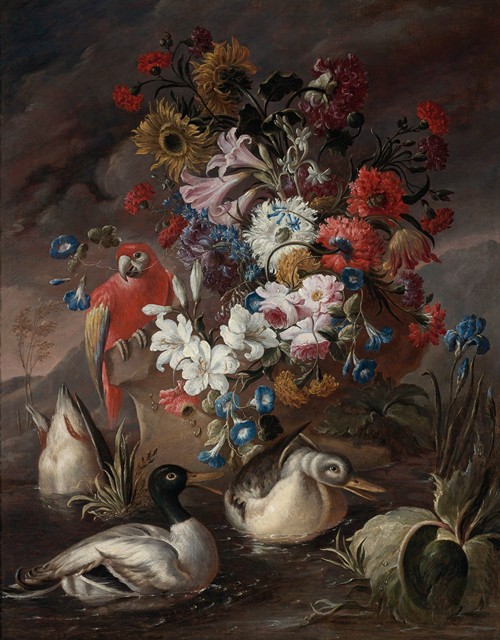
Abate Andrea Belvedere was an Italian painter of the Baroque period.
It is believed that the painter was born not in 1646, as De Dominici reported, but around 1652, based on the discovery, by Prota Giurleo, of the act of death from which it appears that he died in Naples on 27 June 1732 at the age "of 80 years".
The pictorial activity of Andrea Belvedere took place for twenty years, from about 1674 to 1694, the year in which he, evidently preceded by his notoriety, moved to Spain, called by King Charles II. His work at Spanish court continued until 1700, but on his return to Naples, Belvedere abandoned painting to devote himself completely to theatrical activity.
Later Belvedere departed from the style of Paolo Porpora, that is, from works with Caravaggio-like period of still lives and flowers, apparently rejecting their mere "decorative" value. He appears to have been influenced by Giuseppe Recco and never rhetorical "Baroque" exuberance of Giovan Battista Ruoppolo, deriving from them an exalting sense of light and vitality.
Belvedere was described as the only great painter of still life at a time when in Naples this genre was rapidly declining. His originality of his art attracted a considerable number of younger artists.
When he moved to Spain in 1692, he was employed by Charles II of Spain; and in conjunction with Luca Giordano (who painted the figures), he helped decorate the Escorial. Napier describes Belvedere as imitator, yet also a competitor of the Flemish still-life painter Abraham Brueghel. Among his pupils or followers were Gasparo Lopez, Baldassare de Caro, Tommaso Realfonso, and Nicola Casissa.

